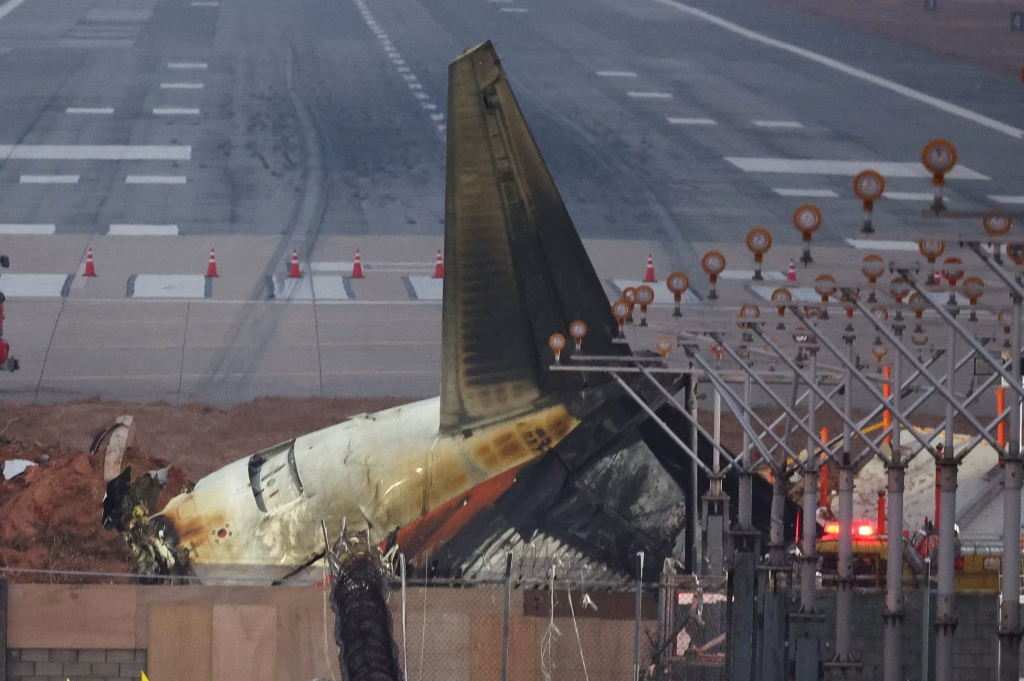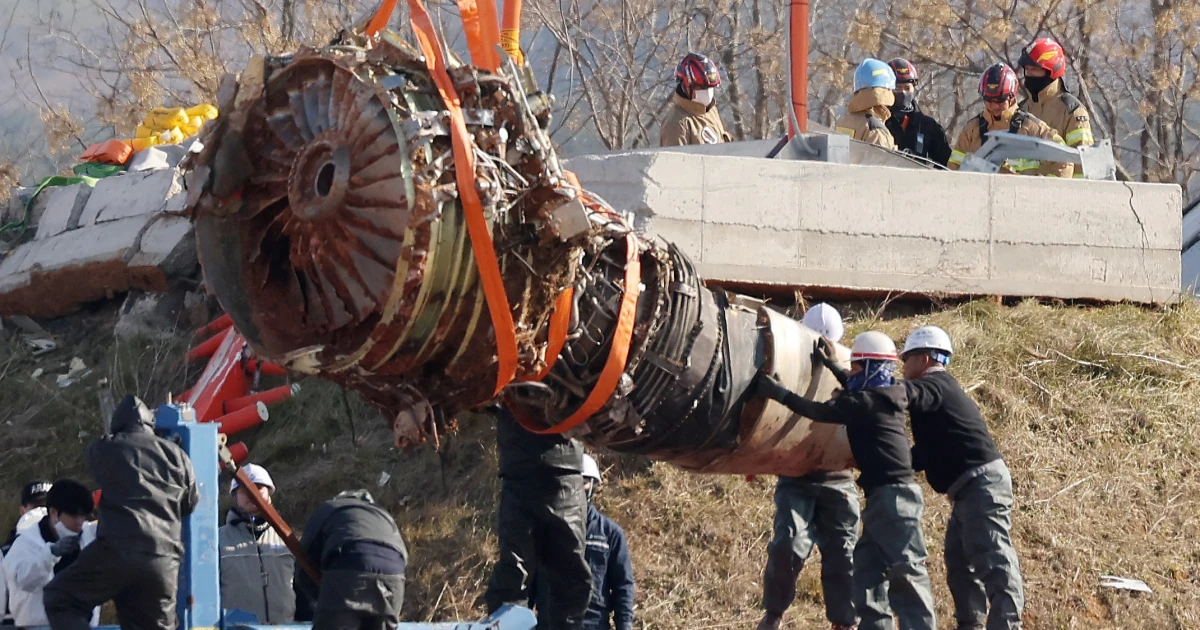Relatives of those who perished in South Korea’s deadliest aviation disaster on domestic soil have rejected a government report which attributes the crash to pilot error, according to a spokesperson speaking to AFP on Tuesday.
The incident occurred on December 29 last year when a Jeju Air Boeing 737-800, en route from Thailand, crash-landed at Muan airport in the southwest of South Korea. The aircraft struck a concrete barrier and erupted into flames, resulting in the deaths of 179 people.
South Korea’s Ministry of Land, Infrastructure and Transport had initially intended to disclose preliminary findings from its investigation over the weekend. However, the scheduled briefing was abruptly cancelled following objections from victims’ families, who argued that the report’s contents could be misleading.
According to the families’ representative, the report suggested a bird strike had affected the plane’s right engine. However, the pilot mistakenly shut down the left engine instead, ultimately causing a complete loss of power and a malfunction in the landing gear system.

The report cited the pilot as saying, “Let’s shut down engine number 2,” which refers to the right engine. However, flight data indicated that the left engine had been switched off instead.
Kim Youn-mi, who represents the bereaved families, told AFP that neither the cockpit voice recordings nor flight data records had been presented directly to them. “We haven’t been properly briefed on any of those things. We deserve to know. It’s our right,” she stated.
The Jeju Air pilots’ union also condemned the findings, expressing deep outrage and accusing the authorities of making a deliberate effort to hold the pilot solely responsible. The union pledged to “firmly reject the malicious attempt to shift blame onto the pilot.”
The investigation remains ongoing, with South Korean and US authorities continuing to examine various possible factors, including the bird strike—traces of feathers and blood were discovered in both engines—a potentially faulty landing gear, and the role of the concrete runway barrier.
A final report is expected to be published in June next year.


 Trending
Trending 